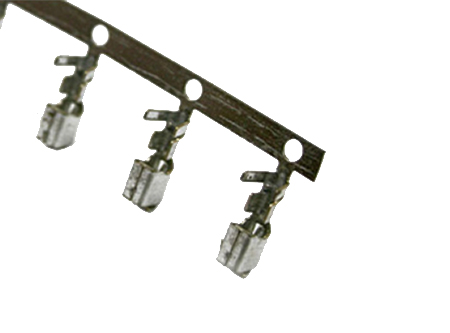Male / Female Terminal
A terminal is a point at which a conductor from a component, device or network comes to an end. The terminal may also refer to an electrical connector at this endpoint, acting as the reusable interface to a conductor and creating a point where external circuits can be connected. A terminal may simply be the end of a wire or it may be fitted with a connector or fastener.
In network analysis (electrical circuits), terminal means a point at which connections can be made to a network in theory and does not necessarily refer to any physical object. In this context, especially in older documents, it is sometimes called a pole. On circuit diagrams, terminals for external connections are denoted by empty circles. They are distinguished from nodes or junctions which are entirely internal to the circuit and are denoted by solid circles.
All electrochemical cells have two terminals, referred to as the anode and cathode or positive (+) and negative (-). On many dry batteries, the positive terminal (cathode) is a protruding metal cap and the negative terminal (anode) is a flat metal disc (see Battery terminal). In a galvanic cell such as a common AA battery, electrons flow from the negative terminal to the positive terminal, while the conventional current is opposite to this.
In network analysis (electrical circuits), terminal means a point at which connections can be made to a network in theory and does not necessarily refer to any physical object. In this context, especially in older documents, it is sometimes called a pole. On circuit diagrams, terminals for external connections are denoted by empty circles. They are distinguished from nodes or junctions which are entirely internal to the circuit and are denoted by solid circles.
All electrochemical cells have two terminals, referred to as the anode and cathode or positive (+) and negative (-). On many dry batteries, the positive terminal (cathode) is a protruding metal cap and the negative terminal (anode) is a flat metal disc (see Battery terminal). In a galvanic cell such as a common AA battery, electrons flow from the negative terminal to the positive terminal, while the conventional current is opposite to this.

MCN-3101-0003

MCN-3101-0004

MCN-3101-0005

MCN-3101-0008

MCN-3101-0009

MCN-3101-0024

MCN-3101-0037

MCN-3102-0004

MCN-3103-0003
